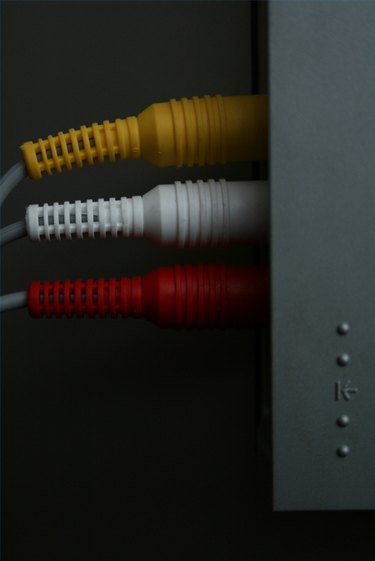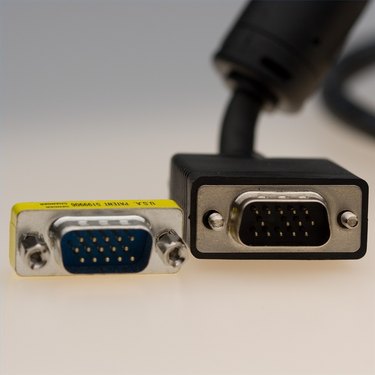If you want to connect a video game console or a computer to a high-definition television, you have a number of options. Component cables are the most popular, since they are inexpensive and can run in lengths of dozens of feet without substantial signal loss. However, you may not have those cables handy, or they may be in use by another device. In this case, VGA and composite cables are popular alternatives.
Composite Basics
Video of the Day
Composite cables typically have two "RCA jacks." There is one jack for audio, and one jack for video. Like component cables, they are inexpensive and can run dozens of feet before the signal starts to degrade. And almost every modern display device has composite inputs. It's handy if you want to connect a hand-held video camera to your TV, or establish a temporary connection for a DVD player.
Video of the Day
Composite Drawbacks

Unfortunately, while composite connections are cheap and plentiful, the image quality is low. The largest resolution size is 720 x 480 pixels (the resolution of a standard-definition television), but the colors also tend to run together since they're not separated into distinct physical channels, like component cables are. Your image also won't be as "crisp."
VGA Resolution

VGA, meanwhile, is capable of high-definition video (meaning 1280 x 720 or higher). It can easily transmit data at 1080p, which is 1920 x 1080 pixels on your screen. The "p" stands for "progressive scan," which produces more fluid motion than 1080i, where the "i" stands for "interlaced" video. Since the AACS (Advanced Access Content System, an industry standard for piracy deterrence) does not allow component cables to transmit 1080p video, a VGA cable is actually the best choice for analog video with HDMI being the best for digital, and overall.
Cable Lengths
Furthermore, VGA is the best choice when it comes to cable distances. While a composite cable can usually only go 50 feet before the signal degrades, a VGA cable can go twice as far because it has better shielding. Yet despite the extra shielding, VGA cables do not become prohibitively expensive with length. If you shop around, you can find a 100-foot cable for less than $25. However, such lengths are not commonly available at retail; you may have to shop on the Internet. If you need an even longer cable, you can purchase an amplifier to keep the signal from degrading.
A Word on Audio
VGA cables do not transmit audio, only video. You will want at least an RCA audio cable, and ideally an optical cable. Optical cables (also known as Toslink) cost slightly more per foot than a VGA cable. These digital audio ports may be labeled "S/PDIF" instead of "Toslink" or "optical."